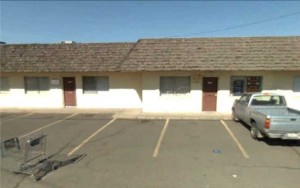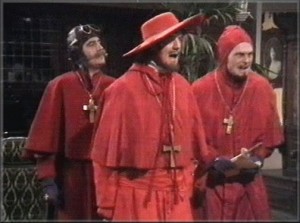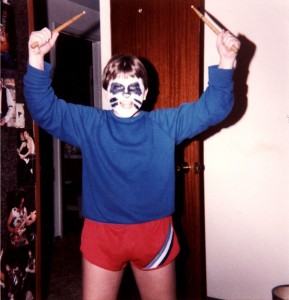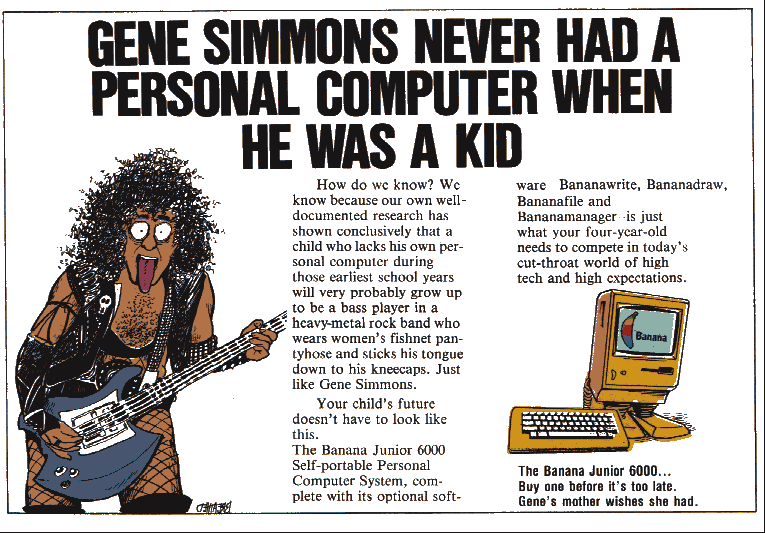more than just a halo
sad, true, Yakima No Comments »There’s been a lot of dream talk around here lately—Not That There’s Anything Wrong With That—but I’m sure you know by now that means I’ve been in one of those cycles where I’ve been extremely busy and out of town a lot. I’ve been gone for gigs, and for the Fourth of July weekend, and then I spent the better part of a week at the Oregon coast with Mom and Brother’s Family. I spent two weekends in a row in Yakima, and actually had a great time, for a change. There’s lots of stuff to potentially write about, but no time to process and think about it all yet, so in the meantime, I’ve decided to dip back into my childhood for this entry.
This story is about a kid in my fifth-grade class who used to pick on me mercilessly. I genuinely hated him, in the way that only children are capable of hating each other. The good news for me at the time was that he was absent from school a lot, and no one seemed to know why. There were rumors that he was sick, or that his parents traveled all the time, but we never really knew for sure. I only remember him being in class for a few weeks of fifth grade, and a handful of days of sixth grade before another of his famously long absences.
A few months into the school year, we finally learned what had happened to him. Our teacher, Mr. G (which, incidentally, stood for ‘Growcock’; I’ve written about him before), brought in a copy of the newspaper and read us a story from the front page about how the boy had died from leukemia. “What’s loo-keem-uh—what’s that?” someone asked. Mr. G explained to us that it’s a form of cancer that spreads through the inside of your bones, and that it’s extremely rare in children, but devastating when it does appear. He went on to read that our classmate’s teenage brother donated some of his own bone marrow to help the boy’s cause and hopefully give him a new lease on life, but two days before he was scheduled to be released from the hospital, he lapsed into a coma and died. He was eleven years old, as was most of the rest of our class. We were dumbfounded. He was dead? How was that even possible? I found myself feeling secretly relieved at the news, since When Bad Things Happen To Bad People It’s Good, at least in a kid’s mind. As far as I was concerned, justice had been served. I also found myself wishing, in my little heart of hearts, that some of my other tormentors would be similarly dealt with, by God or whoever.
I had forgotten about all of this until my friend reminded me of the boy during my last trip to Yakima. Somehow he came up in conversation—I’m not entirely sure how—but we were talking about our grade-school teachers, since my friend had just recently run into one of them at the grocery store. The strange thing (one of the many) about this story is that the boy’s legacy lives on to this day, since he happened to be born into an extremely famous sports family. They’re so famous, in fact, that I won’t even write his name because it’s unusual and you may very well recognize it. The dad was a pitching coach, and he’s still alive. The brother who heroically donated his bone marrow went on to be a major-league pitcher, and since his retirement from baseball, he seems to have recently started a multi-level marketing business in Canada, which is a bit strange. A third brother went on to be a professional pitcher as well. Since I don’t follow sports whatsoever, and I haven’t since I was a kid, I had no idea how famous they all are, so I when I typed their names into FamousSearchEngine, I was shocked by how many results came up, and by the fact that almost every article mentioned the boy who had died so tragically from leukemia, all those years ago, and almost every interview featured one of the family members saying how they don’t go a day without thinking of him. But I knew him, and he was cruel. He was more than just an abstraction in a news story; more than just a little halo in a hospital room.
Yakima is a town from which very few well-known people hail. It’s a bit like Canada, in the fact that people who grow up there know the names of every famous Canadian, and they can rattle them all off on cue. It’s a secret society. Those of us who grew up Yakima have the same ability to run down the list of famous Yakimaniacs from memory, and we can do that even if you wake us up in the middle of any random night. My personal favorite is Raymond Carver, the amazing author, but there are a few others, such as comedian Sam Kinison and actor Kyle MacLachlan. Oleta Adams, who famously sang with Tears For Fears, had my dad as her insurance agent back in the 1970’s. (Incidentally, here’s an awesome live video of Woman in Chains.) Willie Nelson and Kris Kristofferson supposedly each owned a ‘getaway’ house somewhere on Scenic Drive, but none of us knew which houses they actually were. Further down the list are a pair of Olympic gold-medalist skiers who also happen to be twin brothers, and there are a few supernumerary professional football players. Now, at the very moment I decide to tell this dark and surreal childhood tale, I find out that there’s this legendary baseball family as well.
At this point, I would normally try to find some way to wrap this up in a nice little package, possibly with a ribbon and a bow, and leave it for posterity, but I don’t know that I can do that in this particular instance. I should, of course, mention that despite my mixed feelings at the time, I hope my former classmate rests in peace, and my heart definitely goes out to the family now, who are clearly still dealing with the grief and the legacy of this thirty-year-old tragedy, which never quite seems to go away.














